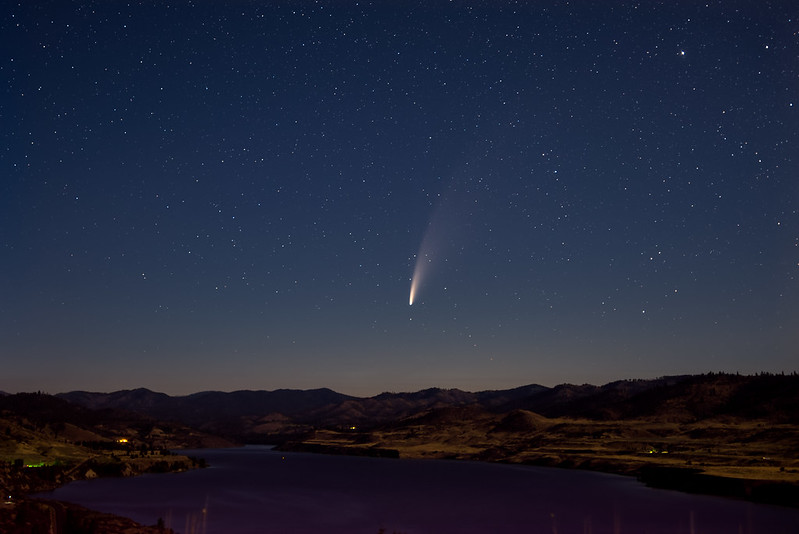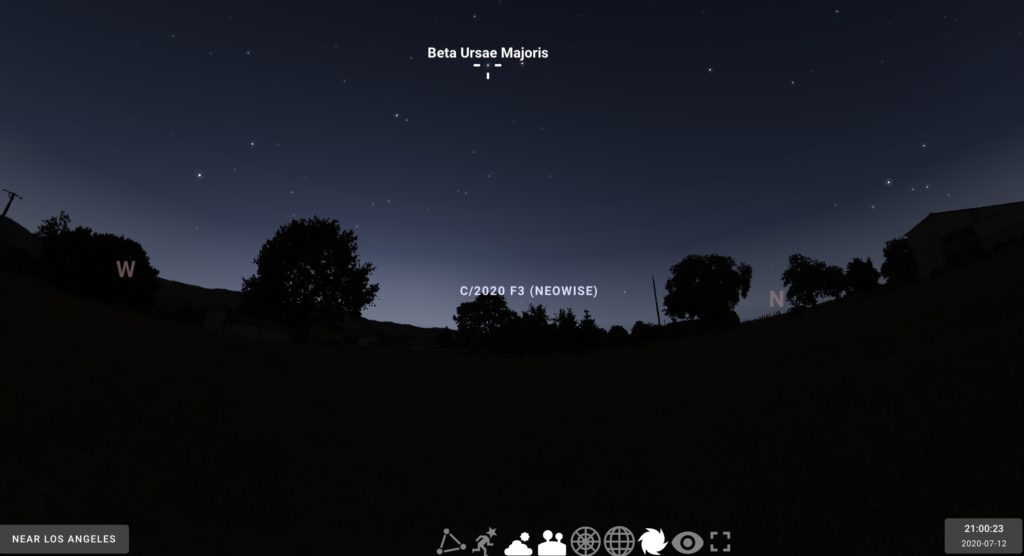
Angelenos who have been up in the wee hours of the morning over the past few days may have noticed a temporary addition to the twilight sky. Starting this weekend, you can look for it in the early evening.
Over the past few days, the NEOWISE comet (or C/2020 F3 as it is also known) has been visible about an hour before sunrise, close to the horizon in the northeastern sky throughout the United States. Now as it speeds away from the Sun, NEOWISE will appear just after sunset in the early evening.
In order to spot it, viewers should look northwest and low to the horizon, aiming their gaze just below the Big Dipper constellation (or Ursa Major).
For the astronomically uninitiated, below is a screenshot from the Stellarium web app, which shows the comet’s projected positioning as of 9 p.m. local time in Los Angeles on Sunday. Note the comet’s orientation to Beta Ursae Major (part of the Big Dipper).

C/2020 F3 was discovered on March 27 by NASA’s Near-Earth Object Wide-field Infrared Survey Explorer (NEOWISE). The comet is about 5 kilometers [3 miles] across, and is covered with sooty, dark particles left over from when it formed some 4.6 billion years ago, about the time the solar system was born.
“In its discovery images, Comet NEOWISE appeared as a glowing, fuzzy dot moving across the sky even when it was still pretty far away,” said Amy Mainzer, NEOWISE principal investigator at the University of Arizona. “As soon as we saw how close it would come to the Sun, we had hopes that it would put on a good show.”
Although the comet is visible to the naked eye, binoculars are recommended if you want a better look at the comet’s long, streaky tail. As with all night sky viewing, light pollution and cloud formation will play a part in visibility. Fortunately, the local forecast looks mostly clear over the next few days, which should contribute to increased visibility.
NEOWISE will be closest to Earth on July 22 at a distance of about 64 million miles. By the end of the month, the comet will fade from view as it departs our inner solar system.
It will be another 6,800 years before the comet’s orbit brings it back around this close to Earth again.
Brian is the co-founder of We Like L.A. and a lifelong fan of puns, the Lakers, and late night tacos. Follow him on Twitter @bchampLA


